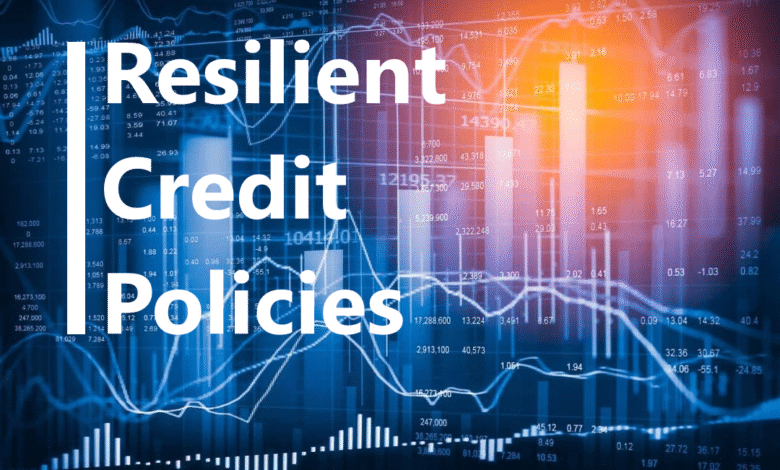Creating Resilient Credit Policies: How to Prevent Debt Before It Starts
Learn how to prevent debt before it starts by creating resilient credit policies that protect cash flow, reduce risk, and align with your business’s strategic goals.

In B2B environments, extending credit is a standard practice that supports sales growth and fosters long-term client relationships. But without a solid credit policy, what begins as a strategic advantage can quickly become a financial liability. Unpaid invoices, growing receivables, and write-offs often stem from weak risk assessment, inconsistent terms, or unclear internal processes. Debt prevention doesn’t start with collections—it starts with how credit is granted and managed. A resilient credit policy isn’t just documentation; it’s a protective system that safeguards your company’s liquidity and ensures customers are partners—not risks.
The Role of Credit Policies in Debt Prevention
A credit policy defines how a company assesses, approves, and manages client credit. It sets expectations on payment terms, limits, evaluation procedures, and escalation pathways. Without structure, credit decisions can become subjective, inconsistent, or driven by sales urgency rather than financial logic.
A well-defined policy builds internal alignment. It helps sales teams understand the boundaries of flexibility, gives finance teams tools for evaluating clients, and creates a transparent path for clients to follow. It’s the first and most critical step in controlling risk before it materializes.
Establishing the Right Framework
Resilient credit policies begin with a clear understanding of your business’s risk tolerance and industry dynamics. A SaaS startup offering monthly billing operates differently from a manufacturer granting 90-day terms to overseas buyers. The framework must be flexible but disciplined, able to evolve with changing market conditions without losing its authority.
Credit limits, approval thresholds, required documentation, and review cycles must be explicitly outlined. These parameters help avoid overexposure to high-risk clients and ensure accountability at every level. Strong policies also define what happens when a client approaches their limit or misses a payment—preventing reactive decisions during a crisis.
Due Diligence as a Frontline Defense
A resilient credit policy puts due diligence at its core. Onboarding new clients should never be rushed. Financial analysis, trade references, credit bureau data, and even site visits or background checks form the basis of responsible credit decisions. Businesses that skip this step often find themselves in recovery mode later.
But due diligence isn’t a one-time event. Periodic reviews of existing clients help identify shifting financial health, market changes, or behavioral red flags. A client who was low-risk last year may not be this year—and your policy should anticipate that.
Aligning Credit Terms with Risk Profiles
Not every client should receive the same terms. Segmentation based on size, industry, payment history, or geographic region allows for more precise risk management. A resilient policy matches credit terms to actual risk—not assumed loyalty or relationship strength.
For high-risk or new clients, short-term limits or upfront payments may be appropriate. Longstanding partners with strong payment records might earn more flexible arrangements. But every term must be backed by policy—not just trust.
Embedding Monitoring and Automation
Modern credit policies leverage technology to monitor risk in real time. Integrated ERP systems, credit monitoring tools, and alerts based on DSO or aging patterns provide early warnings before debts become uncollectible.
Automation ensures consistency. When approvals, reminders, or flags rely on manual intervention, things slip. A resilient policy is one that functions under pressure—and automation makes it scalable, especially during growth or market turbulence.
Internal Collaboration and Enforcement
A credit policy only works when it’s followed. That requires internal buy-in from leadership to frontline sales. It also requires consequences for breaking policy—and a culture that prioritizes sustainable growth over quick wins.
Collaboration between sales, finance, and operations is essential. Sales should not fear lost deals due to tighter controls, but instead understand how strong policies protect future cash flow and credibility. Finance teams must act not only as enforcers, but as enablers—building client trust through clear, professional communication of terms and expectations.
Credit Policies in a Volatile Economy
In unpredictable economic conditions, resilient credit policies are a strategic asset. They allow companies to act quickly, adjust terms, reassess client bases, and shield themselves from systemic shocks. Whether it’s inflation, geopolitical tension, or supply chain disruption, a robust credit policy provides a buffer against instability.
It’s also a competitive differentiator. Clients are more likely to respect terms—and continue doing business—when they understand the structure is fair, consistent, and communicated clearly from day one.
Debt collection begins long before the first overdue invoice. A resilient credit policy ensures that your business isn’t exposed to avoidable risk, that clients understand expectations, and that teams work with confidence. It’s not just about preventing debt—it’s about building a financially stable, growth-ready business environment.
Companies seeking to reduce bad debt and improve payment reliability should start by evaluating their current credit policy and aligning it with industry best practices and digital tools. And when high-risk debt does occur, working with experts like cisdrs.com ensures recovery is managed swiftly and professionally, without compromising future business opportunities.











